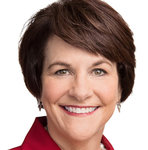








When the COVID-19 pandemic hit earlier this year, it knocked out an already-struggling news industry, causing advertising dollars to plummet and newsrooms to layoff staff or to close entirely.
Despite the ongoing struggles brought on by the pandemic, civil unrest and a volatile U.S. presidential election, news companies found innovative ways of boosting their bottom line so that they could continue to serve their communities. From pivoting to virtual events to growing digital subscriptions, E&P has compiled a list of these ideas and strategies to show that when the going gets tough, the tough get going.
Meeting Virtually
With the rise of COVID-19 cases around the country, health is the number one priority to many readers. To meet those needs, the Philadelphia Inquirer recently held a virtual event called Tell Your Health Story, where attendees found keynote speakers, writing workshops—and new this year—a story slam.
Charlotte Sutton, Inquirer assistant managing editor for business, health and environment, explained that Independence Blue Cross, a health insurer based in the area, wanted to give the Lenfest Institute, owner of the Inquirer, a grant for a health journalism event, and she was asked to lead the effort.
The first Tell Your Health Story event occurred in September 2019 at a hotel. Angelica Irizarry, director of events at the Inquirer, said it sold about 250 tickets.
Due to COVID-19 this year, the paper had to move the event online. It took place over the course of two days on Nov. 13 to 14. However, Irizarry said that it gave the Inquirer the ability to reach a much larger audience. When E&P spoke with her last month, it was too early to say what the final number of tickets sold would be, but the event’s page listed tickets from $19 for students and $49 for professionals.
“Consumer revenue streams, including digital subscriptions and ticketed live events, are increasingly important to news organizations as reliance on traditional advertising revenues continues to decrease,” Irizarry said. “Events like Telling Your Health Story, which are supported in part by an underwriting sponsor, can also provide additional resources beyond consumer revenue.”
Other publications like The Stranger, an alternative bi-weekly in Seattle, Wash., also pivoted popular events online.
In 2009, The Stranger launched its Silent Reading Party, an event where people read silently while being served snacks and listening to live music. The event was held once a month at a hotel until the pandemic halted it.
So, in April, the paper decided to try a Zoom Silent Reading Party. It was so successful it was turned into a weekly gathering, according to former editor Christopher Frizzelle, who is the architect behind the event and a current partner of The Stranger.
Now, hosted every Wednesday at 6 p.m., people sign in for two hours to read and enjoy live music from pianist Paul Matthew Moore. The event was free at the hotel but is now a ticketed event that has sold as many as 232 tickets. Tickets are offered on a sliding scale. People can pay between $5 and $20 weekly or between $50 and $250 monthly. The money is split between The Stranger, Moore and Frizzelle, who explained that half of attendees choose the $5 option, and the other half is divided between the $10, $15 and $20 options. They are also increasingly seeing people pay monthly.
“Watching it go from a funny little side project of mine…into a new revenue stream completely surprised all of us,” said Frizzelle.
In Minnesota, people look forward to the state fair every year—especially those who work at the Minneapolis Star Tribune. Steve Yaeger, chief marketing officer and senior vice president of circulation, told Poynter that the fair is where the newspaper sells merchandise and the most subscriptions. When they heard the fair was cancelled this year due to COVID-19, the newsroom—like the rest of the state—felt the sting. But it didn’t take long before they thought of turning it into a virtual event.
As reported by Poynter, the fair began on Aug. 27 and ran for 12 days on the newspaper’s website. It included an amateur talent contest, mini grandstand concerts, a virtual beer garden where viewers could sample along from home and guides for restaurants around the region that sell fair foods. The merchandise offered included a coloring book, several t-shirts and cheese-curd flavored lip balm —a coveted item (every year people lined up at the paper’s booth to collect the new flavor).
The Star Tribune had yet to look at its audience data when Poynter spoke with them, but early numbers indicate that thousands of people attended the virtual fair. For example, 10,000 people voted on the final round of the talent contest. In terms of revenue, Yaeger said that in 2019, they brought in revenue in the high six figures from the fair; this year it looks to be around $400,000.
Subscription Growth
As lockdowns were mandated around the country, many concerned citizens turned to online news sources to learn more information. At the Mercury News in San Jose, Calif., the paper began to offer a premium, ad-free subscription in January after spending some time exploring the idea.
With the help of a Google News Initiative Grant, Ryan Nakashima, product manager of digital subscriptions for the Bay Area News Group, said the paper’s corporate development team, their paywall vendor and a former Google engineer launched the ad-free subscription for the website earlier this year.
The ad-free subscription is $16 while an unlimited digital subscription is $12—a 33 percent difference. Nakashima explained that they ran multiple tests to determine the best price for ad-free that maximized revenue.
Although he couldn’t share specific numbers in regard to revenue and subscribers, he did share that in the early months about 20 percent of people chose the ad-free subscription at the paywall. He estimates that if one in five people pay the higher rate over the entire subscriber base that would boost overall reader revenue by 7 percent.
Additionally, Dan Petty, digital director of audience development at MediaNews Group, said that based on the Mercury News’ results, the subscription offer has been rolled out to 13 other sister newspapers around the state, including the East Bay Times, Orange County Register and Press-Enterprise, with plans to add the offer to more sister newspapers by the end of the quarter. The Mercury News also plans to expand the ad-free experience to its e-edition and mobile app.
“Our decision to expand this to many more publications is indicative of the fact that we like what see, and we think that there’s a lot more success to be had by scaling it out elsewhere,” Petty said.
Working with the Community
Like many news organizations, the Keene (N.H.) Sentinel had high hopes for 2020. Prior to the pandemic’s impact on advertising, they had a goal to create $100,000 in new revenue, according to a Better News article. They planned to find new opportunities or improve current efforts, specifically event ticket sales. Right away they knew that their email database, which includes over 25,000 email addresses, would play a vital role in this effort.
When the pandemic canceled their in-person events, the Sentinel aimed to utilize the database in other ways including several creative community-based initiatives. A team of 20—from various departments in the newsroom—brainstormed several initiatives. One idea that they felt was noteworthy was their Great Grocery Giveaway sweepstakes.
Utilizing Second Street Media, a vendor that specializes in promotions and contests, the Sentinel set up a contest for local residents, which took place over the course of 10 weeks. A weekly winner would receive $100 in free groceries. Hannaford, a regional supermarket chain, agreed to sponsor the contest for $4,000. This included $1,000 in gift certificates that could be used at Hannaford stories in the region.
After sending out an email blast to their database and running ads in print and online, the contest received 7,200 entries. More than 1,300 participants in the contest opted into their digital News Updates newsletter, which is a key strategy for the newspaper in converting these readers into paying subscribers. In addition, nearly 2,600 participants said they wanted to receive future offers and invitations to contests.
While smaller initiatives like the contest generated value in many ways, the Sentinel’s biggest revenue driver was their crowdfunding campaign, Help Local Journalism Thrive. It generated $47,00 from more than 400 donors and raised an additional $41,000 in a direct appeal to local businesses, donors and philanthropists.
Through these and other initiatives, the newspaper raised $140,000 in new revenue by the end of June.
When asked how important these community-based initiatives were to the Sentinel, Terrence Williams, president and chief operating officer, told E&P, “They’re critical. Whether we are in a pandemic or not, having these locally generated or locally based promotions tend to work really well in a small community like this.”
Facing a similar blow to advertising revenue due to the pandemic, The Day in New London, Conn. partnered with the Local Media Foundation (LMF) to launch a crowdfunding campaign to support its COVID-19 coverage.
Writing for Better News, Carlos Virgen, The Day’s digital news director, described that as a member of the Local Media Association (LMA) the newspaper was invited to participate in the COVID-19 Local News Fund program, an emergency fundraising campaign launched and administered through LMF. According to LMA, it “allows independent and family-owned news organizations to solicit tax-deductible community donations to support and increase their coverage of the crisis.”
LMA creates the custom fundraising page for each organization that can then be promoted by publishers via link and embed. The program also offers a library of turnkey marketing and promotion assets, ongoing best practices and sample success from across local media and support from the LMA team. LMF is responsible for managing and distributing all payments. Publishers are responsible for developing their campaign messaging and promotional content. Additionally, they must report on how they used the payments to report on COVID-19 issues.
The Day’s messaging focused on the importance of their continued COVID-19 coverage. Virgen told E&P the campaign ran from April to the end of August, and the campaign page shows that $88,605 was raised by 814 people.
Elsewhere, when Alaska Gov. Mike Dunleavy vetoed the operating budget for the state’s public television and radio stations in July 2019, six newsrooms decided to band together in a fundraising campaign.
In a Local News Lab article, Mollie Kabler, executive director of Alaska Public Broadcasting and CoastAlaska (a service organization for public radio stations in the Southeast Alaska communities), explained how KCAW-FM (a non-commercial, community radio station owned and operated by the Raven Radio Foundation, Inc. in Sitka, Alaska) proposed a coordinated month-long fundraising campaign in December 2019 to fellow members that would focus on building awareness around local news and grow a sustainable revenue stream. Stations that joined them included KRBD Ketchikan, KSTK Wrangell, KFSK Petersburg, KTOO Juneau and KUCB Unalaska.
The campaign included two parts: a matching grant program and a marketing package that included graphics, on-air scripts, direct mail language, social media strategy and recorded PSAs that could be personalized. The implementation was largely left to the individual stations.
Together they raised $67,827 through their membership intake channels and $3,040 in donations though Facebook for a total of $70,907. Their goal for the matching funds was $76,500, and they were able to match $20,489 with a contribution from Democracy Fund of the same amount.
Getting the Word Out
Last year, VTDigger.org launched a press release portal at a fee of $25. Open to the community, press releases are submitted—and approved—on the website and mobile app and appear in the organization’s daily email newsletter, which has more than 30,000 subscribers, according to founder and editor Anne Galloway. She estimates that they publish 20 to 24 paid press releases a month, generating about $500 to $600.
The press release portal is actually part of a larger reader services project funded by a grant the organization received from the Lenfest Institute. Located in Montpelier, Vt., VTDigger plans on launching two more portals in 2021, which include an obituary portal and a job portal.
“It’s really important for publishers to find a way to make money however it comes and this is working in our market, and I suspect that it would work in other markets too,” she said.
Earlier this year, Taproot Edmonton, a digital publication founded in 2017 in Alberta, Canada, launched a newsletter service called Taproot Spotlight.
According to co-founder Mack Male, the service is geared toward organizations that serve stakeholders or organizations that are member-based. The service gathers information about a group of individuals or organizations that a client would like to keep tabs on and then writes a briefing that can be delivered to readers at a frequency the client desires. It can be sent as a newsletter or as an insert, meaning it is HTML-ready and can be dropped into an existing newsletter.
Taproot Spotlight is one of four briefings the organization offers. Taproot Edmonton also offers Insight, which is like Spotlight, but for internal purposes; Monitor observes when the client’s organization, product or people are mentioned in the media, and carries the latest headlines for a client’s location, industry or a desired topic; and Beacon is an organization marketing tool that pays attention to topics.
Now, Taproot Edmonton has half a dozen clients across the four briefings. The pricing ranges from $7,500 to $25,000, depending on the client’s needs.
“It is in the early days but its already a growing part of our revenue,” Male said. “Last year, we were 25 percent membership, 75 percent advertising sponsorship. This year that has shifted quite a bit more toward briefings.”
Rebuilding Marketing
When the pandemic shut down businesses for months at a time, it became harder for advertisers to reach consumers. And when those businesses slowly started reopening again, Gannett was there with an ad sales and news initiative called Rebuilding America.
The project produced special issues that covered how businesses and individuals were preparing for the reopening of the U.S. economy after months of lockdown. It also provided advertising opportunities for businesses. At the same time, they saw the need to tell stories around industries that bolster the communities they serve, according to Kathy Jack Romero, president of local metro and communities sales.
The special issues launched across Gannett’s 260 regional newspapers on May 30 and 31. Publications in larger markets produced about 10 to 12 stories, medium-sized sites about six to eight stories, and the smaller sites about four to eight stories. According to Romero, there were a maximum of 12 categories earmarked for the content, which included healthcare, education, home services, restaurants, and dining. Additionally, each publication produced sidebars that focused on their respective communities, which accompanied the national trend pieces.
The businesses involved in those categories were then given a sponsorship option for the corresponding content as well as advertising opportunities, which included a print ad and digital impressions. Romero said about 2,700 clients participated in Rebuilding America, and many of them continued to advertise afterward.
“It definitely was our biggest revenue driver for quarter two,” she said. “It exceeded our expectations (and) the goals that we set out for it by a long shot.”
Trib Total Media, which delivers news to Southwestern Pennsylvania, also launched an initiative to help local businesses reopen in the midst of the pandemic. The company created The Shop Local marketing grant program which matches funds—up to $5,000 per month—spent for advertising in Trib products, according to the Pennsylvania News Media Association.
The businesses could be new and existing Trib customers but had to be locally owned, with no more than two locations in Southwestern Pennsylvania. The online application portal opened to public on April 30 and the grants were awarded May 1 to Aug. 31.
According to Trib Live, just hours after the portal opened, requests for matching grants far exceeded the $250,000 initially reserved for the program. Requests came from more than 60 companies ranging from furniture stories to health care firms. At that point, Jennifer Bertetto, chief executive officer, decided that the company would expand the program to $1 million. By May 13, the company had surpassed $1 million in total grant requests from nearly 200 local businesses.
Comments
No comments on this item Please log in to comment by clicking here